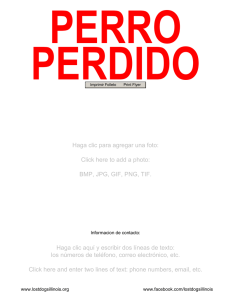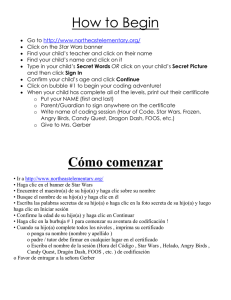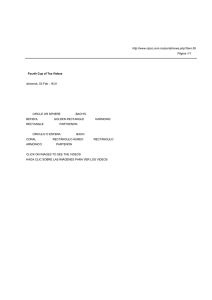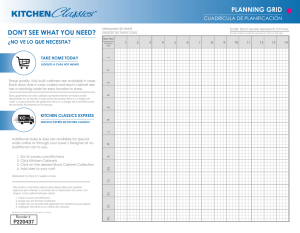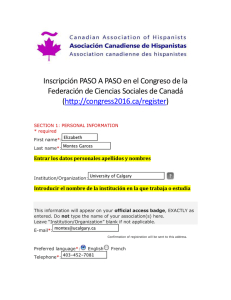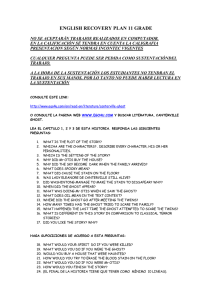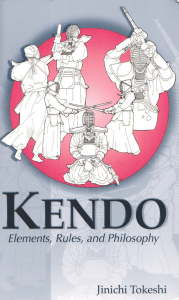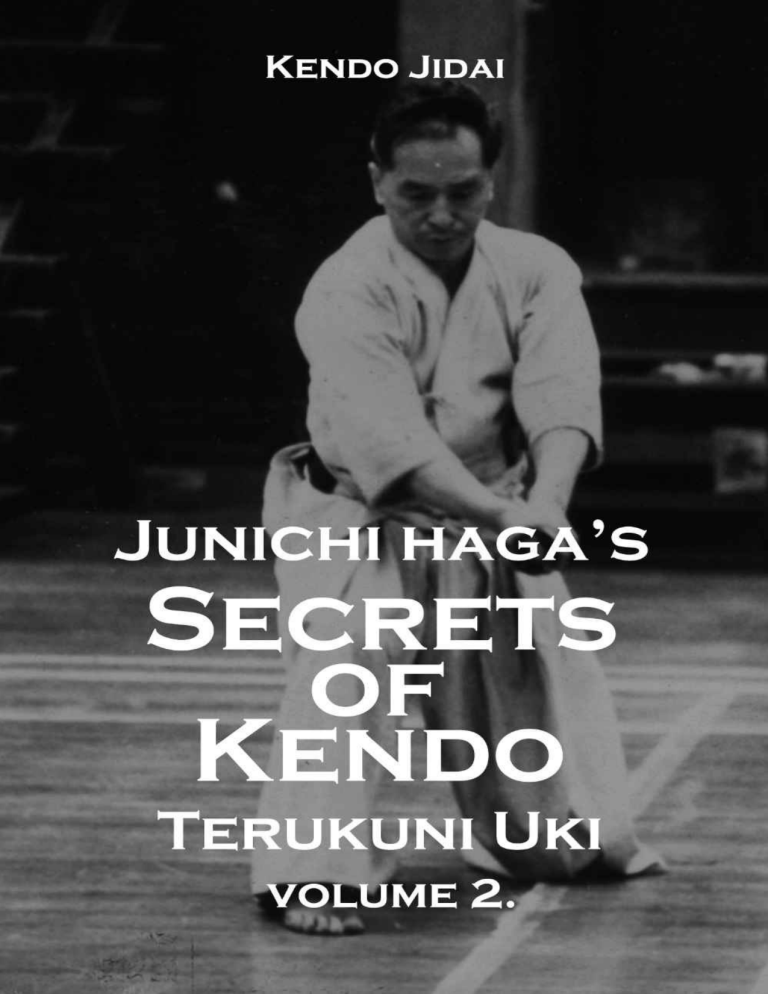
JUNICHI HAGA’S SECRETS OF KENDO Volume 2. By Terukuni Uki Text copyright ?2012 Kendo Jidai All Rights Reserved Junichi Haga, genius of the Showa Period. Joined Hakudo Nakayama’s Yushinkan. Along with Kiyoshi Nakakura and Gorozo Nakajima, eventually became known as Yushinkan’s “Three Crows”, a Japanese expression meaning 3 top practitioners of near equal skill. Though after the war, he worked hard to keep the art of Kendo alive, once Kendo regained its place in the mainstream and gained structured organization, he returns once again to being a private swordsman, and focused on honing his own skills and instructing the new generation. Before long, the group of practitioners gathered around Haga came to be known as Haga Dojo. The Kendo and methods for practice that Haga believed in were carefully protected, and that Kendo, some forty years after Haga’s death, is still alive today. Uki Terukuni, who received instruction directly from Haga, explains Haga ’s Kendo. Practice at the Haga Dojo Kirikaeshi: shomenuchi is worth a thousand strikes Kirikaeshi is an exercise combining shomenuchi and a succession of alternating left and right strikes to head. It is an exercise in which one masters the basic movements in relation to one’s opponent. An exercise that is emphasized most heavily at the Haga Dojo, it teaches how to maintain a proper distance, ashisabaki (footwork), proper use of the upper body, proper tachisuji or cutting path of the sword, and more. You take the basic chudan position, execute a shomenuchi from a distance of issoku-itto (roughly six feet), and after a taiatari (body check), deliver a succession of alternating left and right strikes to the head starting from the left, take the chudan position again, and end with a shomenuchi from a distance of issoku-itto. This is no different from the normal variation of kirikaeshi. However, at the Haga Dojo, where it is standard to take a large back swing and strike, kirikaeishi is executed by fully rotating the shoulders and making sure to firmly strike the center of the men with the shinai. Lastly, you must stay focused to the end and deliver the last shomenuchi with momentum. Additionally, the benefits of kirikaeshi can differ greatly depending on the skills of the motodachi (receiver). This is also something to which Haga sensei paid special attention. Haga sensei received the attacker’s strike, not by allowing the attacker’s shinai to bounce off his, but rather to absorb the power of the attacker’s strike. When receiving the attacker’s strike with a shinai, he allowed the attach to approach until it nearly reached the quilted padding of the men, and sometimes he even lowered his shinai to take the strike on the men, to fully bring out the skill of the attacker. Taiatari (body check): repeated uchikomi taiatari (strike and body check) teaches horizontal movement Uchikomi taiatari is a basic movement practiced heavily in order to master horizontal movement of the body. In taiatari from the starting position, you throw your body against your opponent following through on the momentum of a strike. By throwing your opponent off balance thus, you can shake your opponent’s morale or upset his position and strike. At the Haga Dojo, however, we focus on taiatari in order to master horizontal movement. Haga sensei emphasized that “The body must be upright when executing a strike.” When executing a strike, your body has the tendency to lean forward so as to strike from as far as possible, and the feet tend to get left behind. In Kendo in which leg sweeps are not employed, this can still be a valid strike as long as the shinai hits the strike zone, but at the Haga Dojo, such a strike would result in the attacker immediately being knocked over by a leg sweep. Therefore, your center of gravity must always be in the center of the body; you should stand at a right angle to the ground and move horizontally keeping your posture. Practicing taiatari repeatedly will build up your body so you will not get knocked over. Imagine your navel bumping your opponent’s navel as you perform taiatari. This builds the foundation for striking from the hip. The receiver should take a small step forward with his right foot; while tensing up the lower abdomen he should lower his hands and pulling his left foot up rapidly, stand firm and receive the strike. In a normal practice session, we practice uchikomi taiatari seven to ten times, then move on to kirikaeshi. Kakari-geiko: bring out your skills to the fullest within a short time span Kakari-geiko is a training method in which those with inferior skills fight those with superior skills. Therefore, the kakarite (striker) should not be concerned about a counter attack or having his strike evaded; he should attack and strike using all of the skills he has mastered thus far until his breath gives out. At the Haga Dojo, it is our principle to practice for a short time vigorously, but kakarigeiko is even shorter and more vigorous. The kakarite should be determined to bring out every technique he has and seek every opening to strike the motodachi. During kakari-geiko, the motodachi assesses the calculated strikes the kakarite lets out. The motodachi should weather out or evade a labored or incorrect strike and divert the strike without letting it hit him. Through failure, the motodachi allows the kakarite realize his mistake and lets him master the knack of striking through correct strikes. In this way the motodachi brings out better strikes from the kakarite. It goes without saying that the motodachi plays an important role in instructing the kakarite how to maintain a proper distance, give openings for a strike, evade or respond to a strike, etc., in order to make kakari-geiko effective. Haga sensei’s attacks did not allow for time between strikes or breaths, so the kakarite quickly ran out of breath. It was a tough and exacting practice. Junichi Haga Quotes “Vigor in the morning, indolence at noon, and intensity at night” Photo: Junichi Haga (center) welcomed as an instructor at the Shibaura Institute of Technology Kendo Club. Hanshi jyudan Yuji Oasa and hanshi hachidan Toshio Watanabe are shown third and fourth from the right, respectively. At the Haga Dojo, morning practice is held regularly four times a week on Tuesdays, Thursdays, Saturdays, and Sundays. The All Japan Kendo Federation was established in 1953, and soon after courses started at the National Gymnasium in Kanda Hitotsubashi, Chiyoda Ward. At the time, morning practice took place every morning, but around 1962, when I started going there, a four times weekly practice taught by Haga sensei alone had already become established. In this way, practice at the Haga Dojo became exclusively morning practice. Haga sensei would leave his home in Zoshigaya, Toshima Ward to come to the National Gymnasium for practice, and then go to his shop for work. By “vigor in the morning,” Haga sensei meant that early morning was a time when anyone—if they had the determination—could participate in practice. He said, “As long as you have the right attitude, there is no reason you can’t practice in the morning.” During the day or in the evening, it is more difficult to make the time to practice due to work. However, it is possible to go to morning practice as long as you manage your schedule for the previous day accordingly. “Vigor in the morning, indolence at noon, and intensity at night”—that is where these words probably came from. I still recall Haga sensei laughing as he said, “It is always at night when wicked thoughts came to mind.” Practice at the Haga Dojo (2) Ashibarai: a correction method to make you realize your crumbling posture Ashibarai (leg sweep) is a prohibited act in the current kendo competition rules. For this reason it is rarely seen these days during practice. However, at the Haga Dojo, we aim for a kendo in which your posture does not crumble under any circumstance; thus, if necessary, we perform ashibarai in our daily practice as a correction method. There are basically two types of ashibarai. One way is to hook your left foot around your opponent’s ankle and shove your shinai against your opponent’s left side of the neck and topple him. The second way is to circle to the right as your opponent leans forward to strike your men, step on the top of your opponent’s right foot with your left foot as if to hold it there and topple him. It is dangerous to try to hook your foot around your opponent’s foot to topple him backwards. There is a high possibility that your opponent will hit the back of his head hard, and this may lead to a serious accident. We strictly warn against such a method. In particular, we take care to call this to the motodachi or receiver’s attention, and for beginners, we hold on to a part of their upper body if we perform a leg sweep. By falling over, beginners gradually learn how to fall safely, and before we know it, they can fall without someone holding on to them, without fear of getting injured. Haga sensei disliked bad posture, and if any of his students were practicing kendo with bad posture, he would execute a perfectly timed ashibarai. However, he warned that “ashibarai should not be performed on anyone over forty.” Kumiuchi: quickly getting on top of your opponent and make them run out of breath Kumiuchi is conducted in situations such as when a match with shinai ends in a draw, when a shinai is dropped, or someone has been felled by a leg sweep. You can perform a reverse arm-lock, sit on the fallen opponent’s body and grab his men with one or both hands and pull it up, or in the same position, insert both of your feet under your opponent’s men and twist it up to the left or right. In kendo, because of the heavy equipment, once you have been felled it is hard to move quickly and you cannot get back up immediately. Moreover, if your opponent is on top of you, it is impossible to move at all. Therefore, in kumiuchi, the outcome of the match depends on whether you can get on top of your opponent before he gets on top of you. Once your opponent is on top of you and executes one of the above techniques, it is almost impossible to get back up, and you will not be able to catch your breath. Haga sensei would concentrate his ki or energy on one point and put all his weight on his opponent when performing kumiuchi and his opponent would not be able to move at all. It was as if a large rock was on top of your body. Kumiuchi makes you run out of breath at once. It could be said that one purpose of kumiuchi is to master how to regain control of your breath under these difficult circumstances. Photo: Haga sensei’s kumiuchi Kendo is a match of skills using swords, so it is not particularly recommendable to practice kumiuchi heavily, but it is something that you should master as a means to protect yourself. Short and vigorous: bring out everything you have in each practice session At the Haga Dojo, we aim to bring out everything we have during each practice session. It is not the type of practice in which we say, “Let’s call that a day.” We bring our entire ki to practice. During practice, we strike continuously with barely a moment to confront our opponent, so we quickly run out of breath. At our dojo, practice is held in the morning on Tuesdays, Thursdays, Saturdays, and Sundays. Morning practice is before work, and there is no point in practicing in a way that would interfere with our work later in the day. We have a short but intensive session and go to our jobs after working up a good sweat. I believe that is the significance of having morning practice. In order to have such a morning practice, it is important to exert all your power, but this is not easy to do with a half-hearted attitude. It is essential to concentrate your ki and try to bring it all out during practice through your techniques. Practice with Haga sensei was exactly the type of practice in which you run out of breath; he disliked long-winded practice more than anything. He would close in on his opponent and turn out men, kotemen, katate-men (single-handed men) strikes and so on without even giving his opponent the time to assume a position. His grip was very flexible and he could strike twice, even three times in a row. There was a sense of professionalism in each practice session, and you never felt like you didn’t have enough when you requested a practice session with Haga sensei. Junichi Haga Quotes “Counter in your mind but permit the strike and praise the other’s technique” Photo: participants at the Ikkenkai Haga Dojo’s Yamanashi summer camp held on August 26-27. As can be seen in traditional sayings such as “the ten virtues of kirikaeshi” or “the eight virtues of uke,” the motodachi also plays an important role in kirikaeshi. It goes without saying that the ability of the motodachi greatly sways the level of improvement of the one who requested practice. “When you are the motodachi, you must be prepared to fight for your life. You must not complain no matter where you are struck. If you are struck, it is because of your inexperience.” This is how Haga sensei explained the mindset of the motodachi. He especially disliked listless action when practicing with an inferior swordsman and said, “As long as you are against an inferior swordsman, stay on your toes. When your opponent gives a good strike, respond to the attack in your mind, let him strike you at the last moment, and make it a practice in which you can praise your opponent.” This is easy to say, but hard to put into practice. Haga sensei always conducted practice in a way to bring out his students’ motivation. Even if they ran out of breath during practice, he never did anything to dishearten them. At the Haga Dojo, we hold a summer camp every August. It is an opportunity for all of us to gather once a year to eat at the same table and hold long conversations about kendo. We take plenty of time to train as well, and I always keep in mind Haga sensei’s mental attitude in serving as motodachi. The Haga Dojo’s Form of Swordsmanship Holding a real sword brings a sense of seriousness to practice Everything at the Haga Dojo’s kendo leads to the act of cutting. That is why the first half of practice is iai, and the latter half is practice with a shinai. All the swords used are shinken (real sword). We never use model swords or iai-to (a model sword used to practice iai), and even students and beginners use swords with a dulled edge kept at the Haga Dojo for beginners. I joined the Haga Dojo at the same time I entered university. That was when my parents bought me a real sword for the first time, and I can still remember the sobering feeling it gave me. In Japanese, we also use the word “shinken” to describe a serious effort without any fooling around, and it goes without saying that taking a shinken into your hands brings a sense of seriousness to practice. Originally, the scabbards of samurai swords were made to break easily in order to allow samurai to strike with a sheathed sword and still cut down their opponent when faced with an emergency that did no afford them the time to even draw. Therefore, when sheathing your sword or during nukitsuke (the first strike after unsheathing your sword), if you are not careful, the scabbard will break and you may seriously injure yourself. It is necessary to constantly stay on guard and be attentive to your surroundings even during practice. Haga sensei disapproved of listless practice and at the heart of his disapproval was the fact that we used shinken. How you handle a shinken is reflected in how you take care of your shinai and your kendo equipment, and you will naturally start handling them with care. Iai: kendo is the main art and iai is a hidden one; the two paths are two sides of the same coin. Shinken: everything at the Haga Dojo’s kendo leads to the act of cutting. Holding a shinken in your hands brings a sense of seriousness to practice. Haga sensei received instruction from Sensei Hakudo Nakayama and trained at Yushinkan. The iai taught at the Haga Dojo now carries on the style that Haga sensei learned and mainly incorporates the Omori style and the Eishin Hasegawa style. Iai training requires not only the hands and feet, but also the knees and hips to move in a consistent manner. It is important to exercise the entire body habitually, and practice so that you can use the sword as if it were a part of your body. Haga sensei stated, “Kendo is the main art and iai is a hidden one. Other than the acts of nukitsuke or sheathing your sword, iai is kendo itself.” From the viewpoint of iai, he considered striking with a shinai—in other words, the present day kendo—as a part of iai. And, from the viewpoint of kendo, it can be said that iai is a part of kendo. Enbu (demonstration) is not a sword dance; at the foundation of enbu, there must always be an awareness that you are cutting. Therefore, it is important to take care not to let the sword make a noise when unsheathing it during nukitsuke. A sound is an indication of strain, that the movement of your two hands is not balanced, and you are not performing hikite properly. The basic sword swing at the Haga Dojo is “horizontal and at a right angle.” This too is based on the foundation of cutting, and differs from present day iai. Confirm your kendo techniques through the experience of cutting At the Haga Dojo, we confirm our techniques such as whether the sword is firmly gripped or the swing of the sword is correct, by actually cutting something. This is the purpose of performing tameshigiri or practice cuts, which we practice now twice or three times a year such as during the summer camp. There are sword shops that sell swords made for cutting straw posts or tatami mats, but we do not use such swords at the Haga Dojo. We use swords that are the same as those that used to be used by samurai, not just to cut straw posts and tatami mats. Therefore, if there is fault in your grip or the momentum of the swing, it is very hard to cut the straw post. For tameshigiri, we must first start by making a straw post. In the past, there was no trouble in finding material for straw posts, such as straw rice bags, as they were readily available. However, now I feel the need to pass onto the next generation how to make straw posts by rolling straw matting. We practice two methods of tameshigiri: kesa-giri, in which we cut diagonally, and suemono-giri. Kesa-giri—cutting from the upper right to the lower left—can be performed relatively easily, but ura-kesa-giri (backward kesa-giri), in which you cut from the upper left to the lower right, is more difficult. Cutting a straw post with a diameter of about 15 cm is said to resemble the feel of cutting a human torso. If you perform a tameshigiri, you would immediately understand that if you do not have a firm grip and your swing does not have enough momentum, you cannot make the cut. Junichi Haga Quotes “How you handle a shinken reflects on how you take care of your shinai” In October 1954, Haga sensei re-established the old kendo equipment shop Umedago and opened shop in Kanda Tamachi, Chiyoda Ward. Since he was the kind of person to run a kendo equipment shop, he had great love for kendo equipment. I recall that all of his shinai around that time were of the Kuniyoshi brand, made domestically. In those days they were not readily available as they are now, and Haga sensei took very good care of them. I mentioned that at the Haga Dojo we used shinken for iai, and for this reason as well, Haga sensei placed great importance on taking good care of equipment. Improper handling of a shinken could lead to a life-threatening injury. He taught us that we must pay the closest attention in order to make sure that we did not injure ourselves or others practicing around us. He also maintained that handling your sword with care became reflected in the way that you took care of your kendo equipment. We are given the privilege of practicing the kendo that we love on a daily basis. Therefore, we should use the best equipment we can afford and would take good care of. Kendo equipment is said to have been born around the Horeki and Meiwa eras (17511771), and was refined to become close to the form they have today. Because of his trade, Haga sensei was considerably knowledgeable about kendo equipment, and he hoped that aesthetically pleasing, inexpensive, sturdy, and easy-to-use kendo equipment would be devised in today’s culturally evolved society. I also still recall how he hoped that this was not left up to kendo equipment makers and shops, but that we kendo aficionados would also participate in coming up with such equipment.
